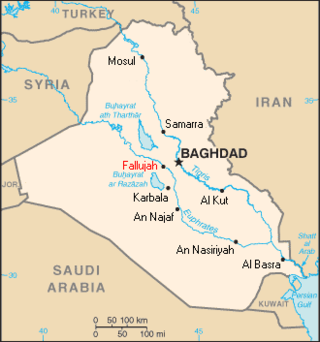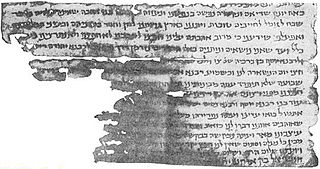Related Research Articles

Hai ben Sherira better known as Hai Gaon, was a medieval Jewish theologian, rabbi and scholar who served as Gaon of the Talmudic academy of Pumbedita during the early 11th century. He was born in 939 and died on March 28, 1038. He received his Talmudic education from his father, Sherira ben Hanina, and in early life acted as his assistant in teaching. In his forty-fourth year he became associated with his father as "av bet din," and with him delivered many joint decisions. According to Sefer HaKabbalah of Rabbi Abraham ben David (Ravad), he was the last of the Geonim.
Eleazar of Worms, or Eleazar ben Judah ben Kalonymus, also sometimes known today as Eleazar Rokeach from the title of his Book of the Perfumer —where the numerical value of "Perfumer" is equal to Eleazar, was a leading Talmudist and Kabbalist, and the last major member of the Hasidei Ashkenaz, a group of German Jewish pietists.
Judah ben Samuel of Regensburg, also called Yehuda HeHasid or 'Judah the Pious' in Hebrew, was a leader of the Chassidei Ashkenaz, a movement of Jewish mysticism in Germany considered different from the 18th-century Hasidic movement founded by the Baal Shem Tov.
Isaac ben Moses of Vienna, also called Isaac Or Zarua or the Riaz, is considered to be one of the prominent rabbis of the Middle Ages. He was probably born in Bohemia and lived between 1200 and 1270. He attained his fame in Vienna and his major work, the halachic guide known as the Or Zarua a compilation of halachic decisions and legal rulings, was very popular among Ashkenazic Jewry. He was a member of the Chassidei Ashkenaz and studied under many scholars, including the Ra'avyah, Rabbi Yehudah HaChasid, the Sar mi'Kutzi and Rabbi Elazar Rokeach. He was among the teachers of Rabbi Meir of Rothenburg.
Moshe haDarshan was chief of the yeshiva of Narbonne, and perhaps the founder of Jewish exegetical studies in France. Along with Rashi, his writings are often cited as the first extant writings in Zarphatic, the Judæo-French language.
Rabbi Isaac ben Jacob or Yitzhak ben Yaakov, nicknamed "ha-Lavan" or "the white" was a 12th-century rabbi of Bohemia. He was a Tosafist and liturgical poet who flourished at Prague in the late 12th century.
Moses of Kiev was a Jewish Talmudist who lived in the first half of the 12th century. Moses seems to have been in western Europe in consequence of the expulsion of the Jews from Kiev in 1124. It is not impossible that he was a pupil of Jacob b. Meïr Tam, whom he seems to have known. From Rus' Moses carried on a correspondence with Samuel ben Ali, the head of the Babylonian academy, and through Moses Western scholars learned of an important legal decision of the Geonim which had been communicated to him by Samuel. Another responsum from Samuel to Moses is found in the manuscript Yiḥuse Tanna'im wa-Amora'im, whose author is probably Judah ben Kalonymus of Speyer. Whether or not this Moses is identical with "Rabbi Moses the Russian", whom the author of Sefer ha-Shoham mentions, is doubtful.
Isaac ben Samuel the Elder, also known as the Ri ha-Zaken, was a French tosafist and Biblical commentator. He flourished at Ramerupt and Dampierre, France in the twelfth century. He is the father of Elhanan ben Isaac of Dampierre.
Simhah ben Samuel of Vitry was a French Talmudist of the 11th and 12th centuries, pupil of Rashi, and the compiler of Machzor Vitry. He lived in Vitry-le-François.
Abraham ben Nathan was a Provençal rabbi and scholar of the 12th-13th centuries.

Chushiel ben Elchanan was president of the bet ha-midrash at Kairouan, Tunisia toward the end of the 10th century. He was most probably born in Italy, but his origins and travels remain obscure, and his eventual arrival in Kairwan is the subject of a well-known story.

Jonah ben Abraham Gerondi, also known as Jonah of Girona and Rabbeinu Yonah, was a Catalan rabbi and moralist, cousin of Nahmanides. He is most famous for his ethical work The Gates of Repentance.

Shabbethai Donnolo was a Graeco-Italian Jewish physician, and writer on medicine and astrology.
Shemariah ben Elhanan was head of the yeshivah of Cairo, Egypt, about the end of the 10th century. Abraham ibn Daud relates that Ibn Rumais, an Arab admiral, had captured four scholars who were voyaging from Bari to Sebaste to collect money for the maintenance of the great school in Babylonia, and that one of the four was called Shemariah b. Elhanan. Shemariah was sold by his captor at Alexandria, where he was afterward ransomed by rich Jews.
Samuel ben Jacob ibn Jam or Samuel ben Jacob Jam'a was rabbi of the North-African community of קאבס (Gabès?) who flourished in the 12th century. He was on intimate terms with Abraham ibn Ezra, who dedicated to him his Ḥai ben Meḳiẓ and mentioned eulogiously three of his sons — Judah, Moses, and Jacob.

Midrash Maaseh Torah is one of the smaller midrashim, and contains compilations of doctrines, regulations of conduct, and empirical rules, arranged in groups of three to ten each and taken from various works. It is frequently found in manuscript, and has been edited at Constantinople (1519), Venice (1544), Amsterdam (1697), and elsewhere, while it has appeared more recently in A. Jellinek's B. H. and is contained also in the Kol Bo, where it frequently deviates from the Amsterdam edition even in the arrangement of its sentences.
Eliakim ben Meshullam Halevi was a German rabbi, Talmudist and payyeṭan.

Eleazar ben Kalir, also known as Eleazar ha-Kalir, was a Byzantine Jewish Hebrew poet. His classical liturgical verses, known as piyyutim, are sung during significant religious services, especially in the Ashkenazi Jews' synagogal rite. In particular, he wrote hymns for the main Jewish festivals, for special Sabbaths, for weekdays of festive character, and for the fast days.
Kalonymos or Kalonymus is a prominent Jewish family who lived in Italy, mostly in Lucca and in Rome, which, after the settlement at Mainz and Speyer of several of its members, took during many generations a leading part in the development of Jewish learning in Germany. The family is according to many considered the foundation of Hachmei Provence and the Ashkenazi Hasidim.
Meir ben Samuel, also known by the Hebrew acronym RaM for Rabbi Meir, was a French rabbi and tosafist, who was born in about 1060 in Ramerupt, and died after 1135. His father was an eminent scholar. Meir received his education in the Talmudical schools of Lorraine, his principal teachers being Isaac ben Asher ha-Levi and Eleazar ben Isaac of Mainz, with whom he later carried on a correspondence.
References
![]() This article incorporates text from a publication now in the public domain : Singer, Isidore; et al., eds. (1901–1906). "DORBOLO". The Jewish Encyclopedia . New York: Funk & Wagnalls. Its bibliography:
This article incorporates text from a publication now in the public domain : Singer, Isidore; et al., eds. (1901–1906). "DORBOLO". The Jewish Encyclopedia . New York: Funk & Wagnalls. Its bibliography:
- Gross, in Berliner's Magazin, x. 75;
- Introduction to the Maḥzor Vitry, ed. Hurwitz, p. 36;
- Perles, in Grätz Jubelschrift, p. 31;
- Berliner, ib., pp. 176, 177;
- Epstein, in Monatsschrift, xli. 307;
- Charles Taylor, Appendix to The Sayings of the Jewish Fathers, pp. 12 et seq., Cambridge, 1900.